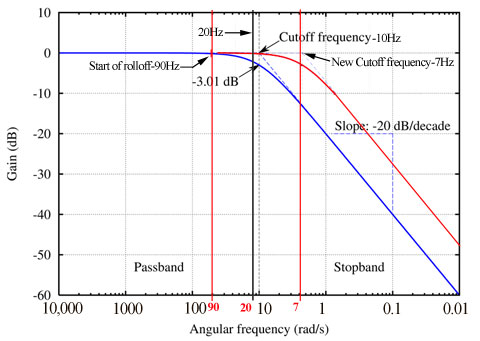Quote:
Originally Posted by regal /img/forum/go_quote.gif
Phase "distortion" is a misnormer, it just means there is a shift in phase relative to the other frequencies up to 10x the cutoff freq. On headphones I believe it is a non issue. I have used VST plugins to purposely change the phase below 80 hz and it is completely inaudible. I could be wrong but I think this is a bit of a head-fi myth.
|
While I generally agree with eric's last post, I think you have a point, there. I've used the term, too (phase distortion), but the actual
start of the corner frequency fall off may be more important.
I published this graph way back in July of last year in the Millett MAX thread (Post
#479):
It's easy to see in this case that if someone is pursuing flatline amplifier response (why wouldn't we?), then you have to take into account where that -3dB cutoff slope starts deviating from the flatline. To do that, you have to push the cutoff frequency lower so that the
start of the fall off occurs at 20Hz or below. Whether the start of the response deviation can be called "phase distortion" seems a bit iffy, I guess, but the desired effect is similar: you want the cutoff frequency almost less than half of 20Hz.
Note -3dB cutoff frequencies:
470uf w/32ohms ~10Hz,
680uf w/32ohms ~ 7Hz,
1000uf w/32ohms ~ 5Hz.
This and the graph shows that 680uf might be a minimum to ensure a flat response with Grados down to 20Hz. That said, no one has ever reported issues with bass rolloff using Grados on a Millett or MAX with 470uf output caps. I think that has most to do with the fact that Grado's own response curve peaks at 50Hz and rolls off under that.
Disclaimer: I
am not saying that Grados' bass response is limited. When you get below 50Hz, you're talking about feeling rather than hearing, anyway.



